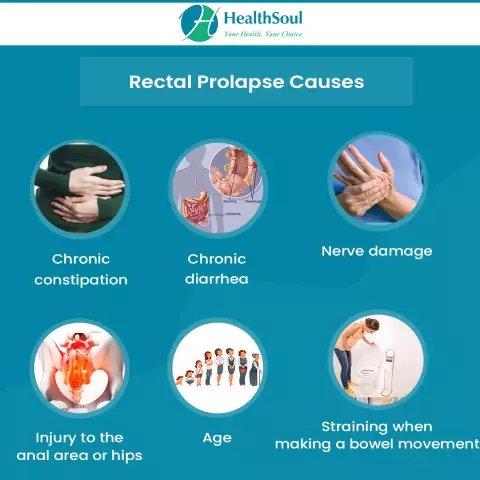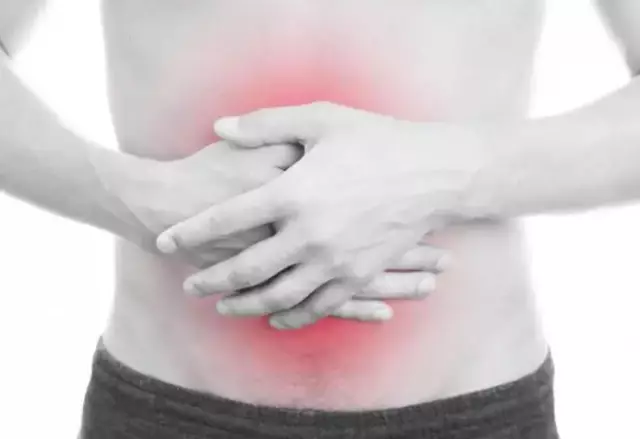- Author Rachel Wainwright [email protected].
- Public 2023-12-15 07:39.
- Last modified 2025-11-02 20:14.
Rectal prolapse
Rectal prolapse is a disease in which the rectum from its normal anatomical position is partially or completely outside the anus.

Rectal prolapse can occur without any side symptoms, or it can be accompanied by mucous secretions, rectal bleeding and sudden bowel movements.
In children, rectal prolapse predominantly occurs between the ages of one and four years and is mainly associated with prolonged sitting of the child on the potty and drinking small amounts of liquid. In women, rectal prolapse is associated with the growth of polyps or tumors on the intestinal walls, tension during bowel movements, pelvic floor muscle weakness, tissue damage during childbirth, or may be the result of surgery. In rare cases, the disease is life threatening, but symptoms can be quite debilitating if not treated promptly. Rectal prolapse in older women is much more common than in men or children.
Complications of the disease are extremely rare, however, with untimely treatment, severe rectal bleeding, prostate adenoma may occur, and in very rare cases, a cancerous tumor may occur on that part of the rectum that has gone beyond the anus.
Rectal prolapse symptoms
The symptoms of rectal prolapse are:
- Fecal incontinence;
- Constipation;
- Minor anal bleeding;
- Pain during bowel movements;
- Anal itching;
- Mucous discharge from protruding tissue.
Reasons for rectal prolapse
A number of factors can contribute to the development of rectal prolapse. It can occur due to constant stress during bowel movements or be a consequence of childbirth, in rare cases a genetic predisposition can lead to it.
Sometimes rectal prolapse is caused by a weakening of the anal sphincter and stretching of the ligaments that hold the rectum in the pelvis. Rectal prolapse can also result from generalized pelvic floor dysfunction, combined with urinary incontinence and pelvic organ prolapse. Spinal cord disorders or diseases can also be causes of rectal prolapse.
Rectal prolapse treatment
Risk factors for rectal prolapse in children are cystic fibrosis and straining during bowel movements. Often, the treatment of rectal prolapse in children is carried out by conservative methods under the supervision of a doctor at home.

If the rectal prolapse in a child is partial, then you can try to carry out the treatment yourself, for which you need:
- Put on rubber gloves and put grease on your fingers;
- Slowly and carefully push the released rectal tissue back into the anus;
- Apply an ice pack to the anus through a damp cloth to reduce swelling and not damage the skin.
If the rectal tissue has difficulty moving back into the anus, you must stop doing the procedure yourself and see a doctor.
In adults, rectal prolapse is treated with surgery, but there is no single correct medical treatment for this condition. The most common surgical procedures for rectal prolapse are:
- Laparoscopy;
- Surgery to strengthen the ligaments that support the rectum;
- Rectal ectomy;
- Tying the rectum;
- Rectopexy;
- Sigmoid colon ectomy;
- Rectosigmoidectomy.
YouTube video related to the article:
The information is generalized and provided for informational purposes only. At the first sign of illness, see your doctor. Self-medication is hazardous to health!






